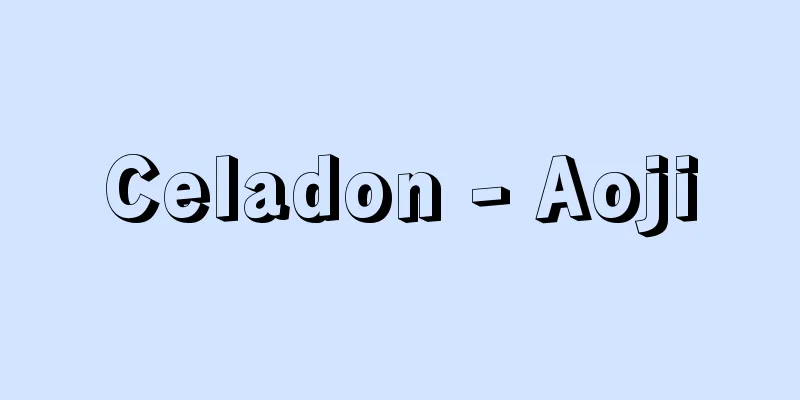Communication cable

|
An electrical communication cable designed to transmit voice, images, signals, and codes. It was developed in the United States in 1886, and the first underground telephone cable in Japan was laid between Tokyo and Yokohama in 1896 (Meiji 29). [Teruo Sakuma] kindsThere are two types of communication cables: balanced and unbalanced. A balanced cable is one in which the conductors of a pair (two electric wires) are wires of the same thickness, and each of the two wires is structurally and electrically in roughly the same relative position to the other conductors, shielding, or protective metal bodies, and examples of this include local cables, long-distance cables, and carrier cables. An example of an unbalanced cable is a coaxial cable. A coaxial cable has a circular central conductor concentrically surrounding it with a cylindrical outer conductor, and is used as a long-distance trunk cable. [Teruo Sakuma] Balanced CableThe conductor is generally a soft copper single wire with a diameter of 0.32 to 0.9 mm. Kraft paper was used for insulation at first, but most of the insulation currently manufactured is now made of plastic. There are various types of twisting, such as pair twist, in which two core wires are twisted together, and star twist, in which four core wires are twisted together so that their cut surfaces are at the vertices of a square. The required number of pairs or quads are collected and arranged in layers and assembled. There are two types of assembly: normal type and unit type. The normal type is concentrically twisted and assembled into a cylindrical shape. The unit type is made by gathering 100 pairs or an appropriate number of pairs into one unit, and twisting the required number of units together. The outer sheath can be lead sheathed, aluminum sheathed, Stalpes, or LAP (laminated sheath). Stalpes is a sheath made of aluminum tape wrapped vertically in steel tape, soldered at the seams, and then coated with polyethylene. LAP is a sheath that is made by wrapping aluminum tape vertically in a laminate tape with a thin plastic film attached to one side, and then covering it with polyethylene. When this is done, the plastic in the laminate tape melts and becomes one with the polyethylene. [Teruo Sakuma] City CableThese cables are used within the same subscriber area and are divided into distribution cables for wiring to subscribers, feeder cables that house them together in a telephone exchange, and relay cables used for relaying between local telephone exchanges. The main distribution cables are local CCP (short for color coded polyethylene) cables, which are polyethylene insulated and sheathed with color-coded cores, and are based on a 10-pair unit with star-shaped quads, with some having 400 pairs. When used as an overhead cable, a self-supporting type with a steel wire for hanging is used to simplify overhead work. The main feeder cables used are paper-insulated Stalpes cables and local PEF (expanded polyethylene) cables. Paper-insulated Stalpes cables are constructed by wrapping insulating paper around soft copper single wires and twisting them into star-shaped quads, and for 200 pairs or less, the required number of quads are arranged in layers and twisted in opposite directions to form the cable core, and for 400 pairs or more, 100-pair units are made and the required number of these are twisted together to form the cable core and then coated with a Stalpes sheath. City PEF cables were developed with the intention of increasing the number of fine pairs, and are made by PEF-insulating 0.32 mm soft copper single wires, twisting them into star-shaped quads to form a unit type and applying a Stalpes sheath, with some cables having up to 4000 pairs. Relay PEF/LAP cables are used for relay cables. In large cities, the subscriber area is very wide, so the length of the cable is long and the amount of attenuation increases. To compensate for this, coils with concentrated inductance are inserted at regular intervals. These are called loading coils. [Teruo Sakuma] Long distance cableIntercity PEF and LAP cables are mainly used. They are constructed of soft copper single wires insulated with PEF, twisted into star-shaped quads, and the required number of quads twisted together and covered with LAP sheath, and are used for short-distance transmission. As line demand increases, 4.4 mm fine core coaxial cable and 9.5 mm standard coaxial cable are being used in areas that were previously covered by intercity cables. [Teruo Sakuma] Carrying cableIn 1932 (Showa 7), Matsumae Shigeyoshi and others announced the unloaded cable method for long-distance transmission, and the link between Tokyo and Mukden was completed in 1939 using this method. Japan was the first in the world to implement the unloaded cable method, and the cable used for it is called a carrier cable. To reduce attenuation, cordel (paper string) is wrapped around the conductor, which is then insulated with paper tape and twisted into a star-shaped quad. However, with subsequent technological advances, coaxial cable has become the method of choice for long-distance transmission. Currently, the demand for communication lines is expanding, and optical fiber cables are attracting attention as a new method of large-capacity communication. [Teruo Sakuma] [Reference item] | |Source: Shogakukan Encyclopedia Nipponica About Encyclopedia Nipponica Information | Legend |
|
電気による通信で、音声、画像、信号、符号を伝送することを目的とするケーブル。1886年アメリカで開発され、日本では96年(明治29)に東京―横浜間に初めて電話地下ケーブルが敷設された。 [佐久間照夫] 種類通信ケーブルには平衡ケーブルと不平衡ケーブルがある。平衡ケーブルは一対(電線2本)の導体が同一太さの線で、その2本のそれぞれがそれ以外の導体、遮蔽(しゃへい)体あるいは保護金属体などに対し、構造的にも電気的にもほぼ等しい関係位置にあるものをいい、市内ケーブル、市外ケーブル、搬送ケーブルなどがこれに属する。不平衡ケーブルには同軸ケーブルなどがある。同軸ケーブルは1本の円型の中心導体と、これを同心状に囲む円筒形の外部導体を配置したもので、長距離幹線用ケーブルとして利用されている。 [佐久間照夫] 平衡ケーブル導体は一般に軟銅単線で直径は0.32~0.9ミリメートルが使用され、絶縁には当初クラフト紙が用いられたが、現在製造されているものは大部分がプラスチックにかわってきている。撚(よ)り合わせには2本の心線を撚り合わせた対撚り、4本の心線をまとめてその切断面がそれぞれ正方形の頂点にあるように撚り合わせた星撚り(星形カッド)などがある。対またはカッドを所要数集め、層に配列して集合する。集合には普通型とユニット型がある。普通型は同心撚りで円筒形に集合する。ユニット型は100対または適当対数を集合して一ユニットとし、そのユニットを所要数撚り合わせる。外被には鉛被、アルミ被、スタルペス、LAP(ラミネートシース)などがある。スタルペスは、アルミニウムテープで包んだ上を鋼テープで縦に包み、合せ目をはんだ付けし、その上をポリエチレンで被覆したシースsheathである。LAPは、アルミニウムテープの片面に薄いプラスチックフィルムを張り付けたラミネートテープで縦に包み、その上にポリエチレンを被覆したとき、ラミネートテープのプラスチックが溶けてポリエチレンと一体となったシースである。 [佐久間照夫] 市内ケーブル同一加入区域内で使用されるケーブルであり、加入者に配線する配線用ケーブル、それを電話局にまとめて収容する饋線(きせん)ケーブル、市内電話局相互の中継に用いる中継ケーブルに分けられる。配線用ケーブルに主として用いられているのは市内CCP(color coded polyethyleneの略)ケーブルで、全心線着色識別のポリエチレン絶縁、ポリエチレン外被ケーブルであり、星形カッドの10対ユニットを基準とし、400対のものもある。架空ケーブルとして用いる場合は、架空作業を簡単にするために吊(つ)り下げ用鋼線を添えた自己支持型が用いられる。饋線ケーブルに主として用いられているのは紙絶縁スタルペスケーブル、市内PEF(発泡ポリエチレン)ケーブルである。紙絶縁スタルペスケーブルは、軟銅単線に絶縁紙を重ね巻きして星形カッドに撚り、200対以下では所要対のカッドを層に配列し、各層反対方向に撚り合わせてケーブル心にし、400対以上では100対ユニットをつくり、これを所要数撚り合わせてケーブル心にし、スタルペス外被を施した構造である。市内PEFケーブルは、細心多対化を意図して開発されたケーブルで、0.32ミリメートルの軟銅単線にPEF絶縁し、星形カッドに撚り合わせてユニット型にし、スタルペスシースを施したもので、最大は4000対のものもある。中継ケーブルには中継PEF・LAPケーブルが用いられている。 大都市では加入区域が非常に広いので、ケーブルの長さが長くなり減衰量が増大する。これを補償するために一定間隔ごとに集中インダクタンスのコイルを挿入する。これを装荷コイルという。 [佐久間照夫] 市外ケーブル主として市外PEF・LAPケーブルが使われている。構造は軟銅単線にPEF絶縁し、星形カッドに撚り、必要なカッド数を撚り合わせLAPシースを施したもので、短距離搬送に用いられる。回線需要が増大するとともに、従来は市外ケーブルの適用区間であったところに、4.4ミリメートル細心同軸ケーブルや9.5ミリメートル標準同軸ケーブルが使われている。 [佐久間照夫] 搬送ケーブル1932年(昭和7)松前重義(しげよし)らが遠距離搬送用に無装荷ケーブル方式を発表し、東京―奉天間の連絡はこの方式によって行われ39年に完成した。無装荷ケーブル方式は日本が世界に率先して実施したもので、これに使うケーブルを搬送ケーブルという。減衰量を小さくするため、導体上にコルデル(紙紐(ひも))を巻き、その上に紙テープを巻いて絶縁し、星形カッド撚りされている。しかし、その後の技術の進歩によって長距離搬送には同軸ケーブル方式が主体となっている。 現在では、通信回線の需要は、ますます拡大しており、大容量通信方式として新しい光ファイバーケーブルが脚光を浴びている。 [佐久間照夫] [参照項目] | |出典 小学館 日本大百科全書(ニッポニカ)日本大百科全書(ニッポニカ)について 情報 | 凡例 |
<<: News agency - Tsuushinsha (English) Wire service
>>: Distance learning - tsuushinkyoiku
Recommend
Banking system
This is a typical example of an online system. Ban...
Keihoku [town] - Keihoku
A former town in Kitakuwada County, located in cen...
PTA - PTA
An educational organization made up of parents an...
Gandhi versus Lenin
…He was a supporter of Tilak and then approached ...
Compressed felt - Ashkufelt
...These were called kasen (flower-patterned felt...
Berkowitz, L.
...In other words, frustration is always the prem...
Identification - Observation
A tag issued to publicly certify that permission h...
Upper limit - upper limit
〘noun〙① The upper limit. ⇔The lower limit. *Thinki...
Delphi technique
… [Intuitive method] This method makes use of hum...
Tenka Nishida
Religious leader. His real name was Ichitaro. He ...
Lapita
…The oldest pottery in Oceania, found in the sout...
AHD - Ahh H D
… Digital audio discs are new discs that incorpor...
Mr. Narita
A medieval samurai family from Musashi Province. T...
Overseas investment insurance
This insurance was established in May 1970, follow...
Inquilinus
A term used ambiguously in the Roman era. It was u...
![Neagari [town] - Neagari](/upload/images/67cc751c991d7.webp)








